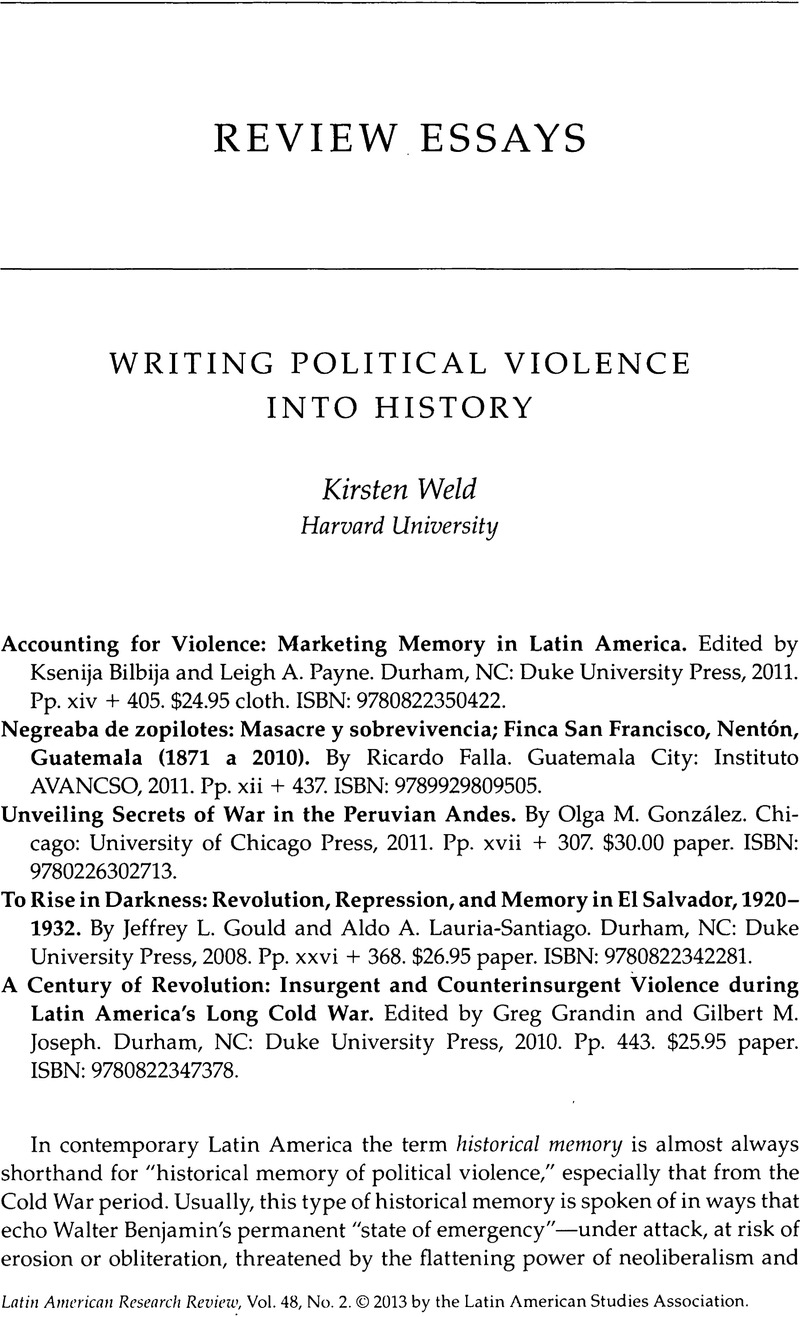Published online by Cambridge University Press: 05 September 2022

1. Elaine Scarry, The Body in Pain: The Making and Unmaking of the World (New York: Oxford University Press, 1987).
2. Arno Mayer, The Furies: Violence and Terror in the French and Russian Revolutions (Princeton, NJ: Princeton University Press, 2002).
3. Francis Fukuyama, The End of History and the Last Man (New York: Free Press, 1992).
4. Charles R. Hale, “Consciousness, Violence, and the Politics of Memory in Guatemala,” Current Anthropology 38, no. 5 (1997): 817–833; Charles R. Hale, Más que un indio: Racial Ambivalence and Neoliberal Multiculturalism in Guatemala (Santa Fe, NM: School of American Research Press, 2006); Carlota McAllister, The Good Road: Conscience and Consciousness in a Postrevolutionary Guatemalan Village (Durham, NC: Duke University Press, forthcoming); Betsy Konefal, For Every Indio Who Falls: A History of Maya Activism in Guatemala, 1960–1990 (Albuquerque: University of New Mexico Press, 2010).
5. All quotes from this volume were translated by the reviewer.
6. Primo Levi, The Drowned and the Saved (New York: Vintage, 1989).
7. Melanie Klein, “Envy and Gratitude” and Other Works, 1946–1953 (New York: Dell, 1975).
8. David Stoll, Rigoberta Menchú and the Story of All Poor Guatemalans (Boulder, CO: Westview, 1999).
9. Elizabeth Jelin, State Repression and the Labors of Memory (Minneapolis: University of Minnesota Press, 2003).